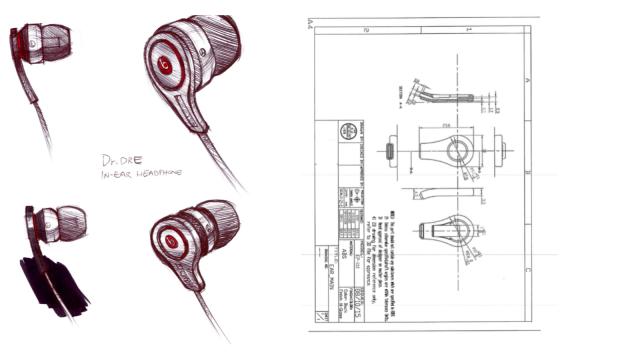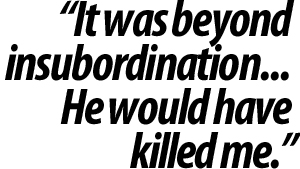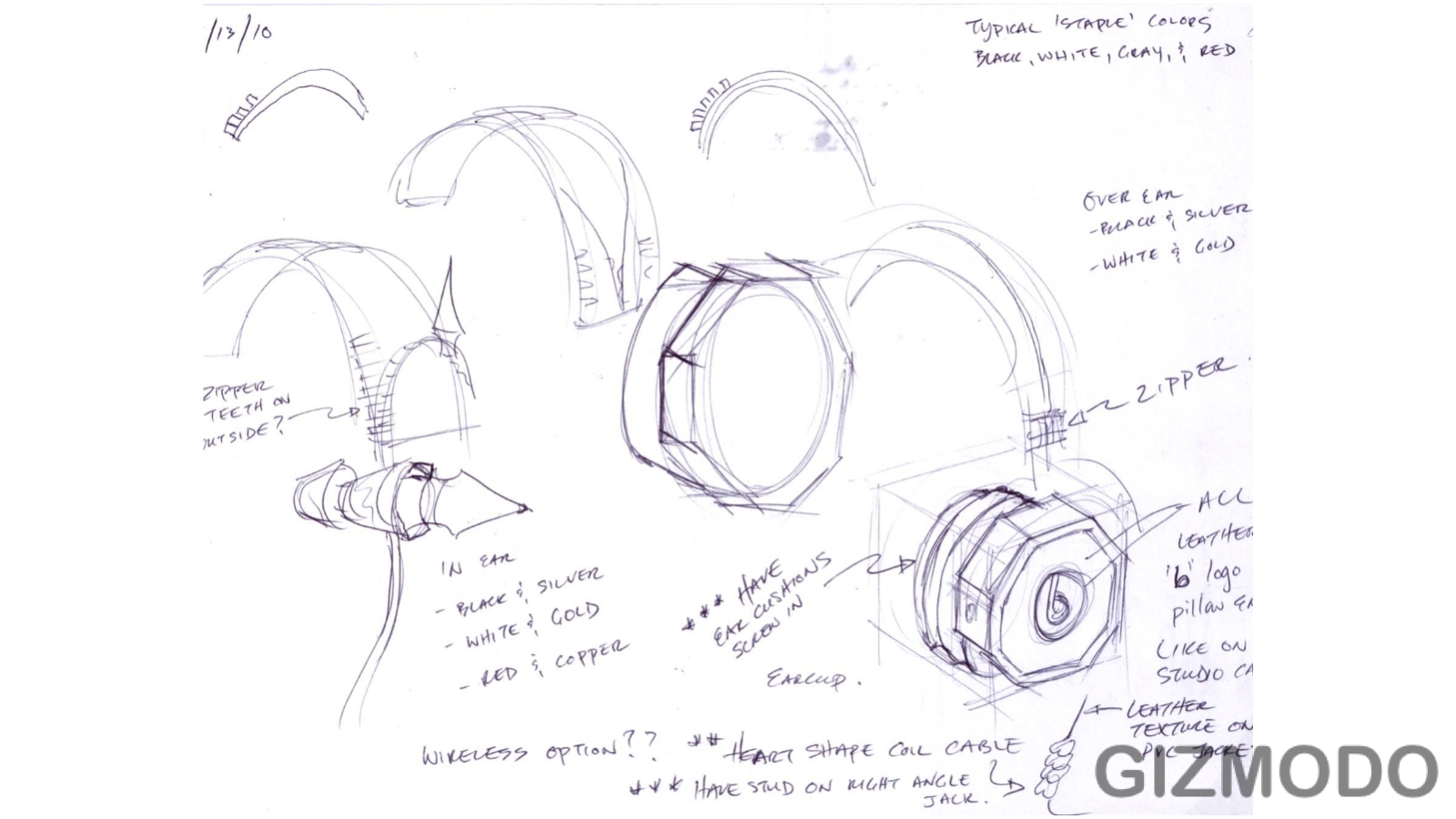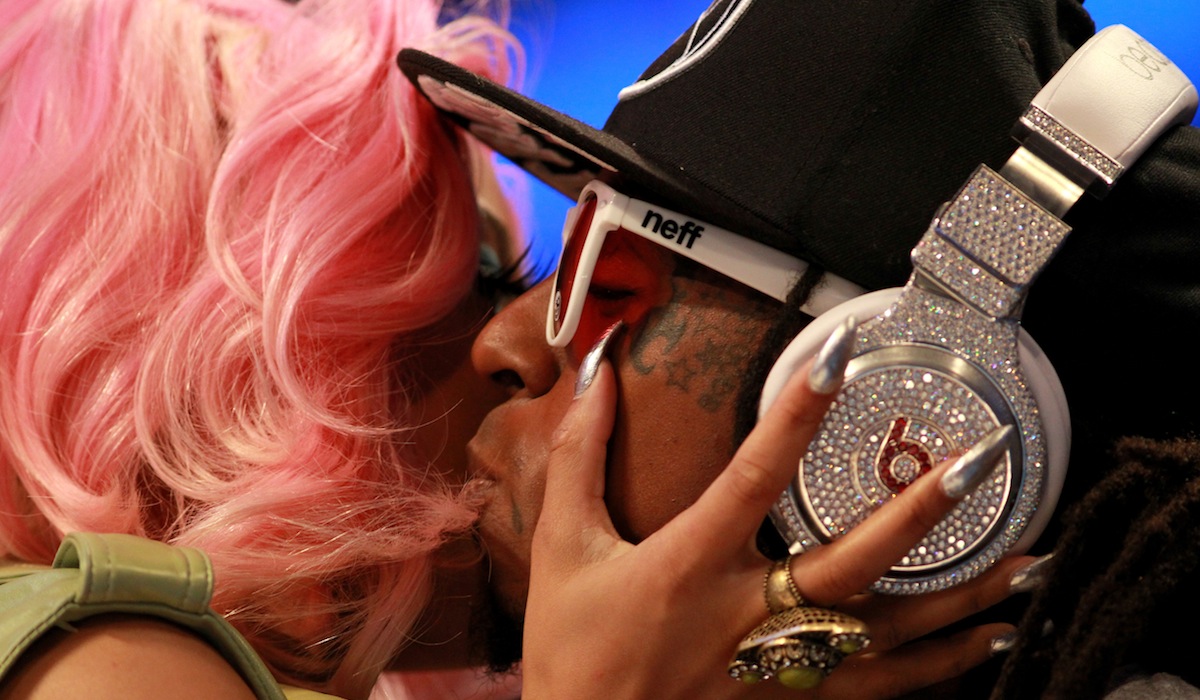
There’s never been anything like Beats By Dre. The bulky rainbow headphones are a gaudy staple of planes, clubs and footpaths everywhere: as mammoth, beloved and expensive as their namesake. But Dr Dre didn’t just hatch the flashy lineup from his freight train chest: The venture began as an unlikely partnership between a record-industry powerhouse and a boutique audio company best known for making expensive HDMI cables.
Before there was Apple Music, before Beats was a streaming service and before Dr Dre was sued, there an origin story…
You might know this; you might own a pair of beats that still has Monster’s tiny, subjugated logo printed on them. But what you don’t know is how, in inking the deal, Monster screwed itself out of a fortune. It’s the classic David vs Goliath story — with one minor edit: David gets his arse kicked and is laughed out of the arena. This is the inside story of one of the all time worst deals in tech.
The route to a rapper-gadget sensation doesn’t start in the VIP section of a club over a bottle of Cristal. The idea wasn’t hatched in the back of a Maybach or in a boardroom whose walls are decked out in platinum records and shark tanks. Before Dre got paid, and red ‘B’ logos clamped millions young heads across the globe, the son of Chinese immigrants started toying with audio equipment in California.
Beats begins with Monster, and Monster begins with Noel Lee. He’s a friendly, incredibly smart man with a comic-book hairstyle and a disability that adds to his supervillain stature: Lee is unable to walk. Instead, he glides around on a chrome-plated Segway. Lee has been making things for your ears since 1979, after he took an engineering education and spun it into a components business with one lucrative premise: your music doesn’t sound as good as it could.
In true Silicon Valley fashion, Lee started out in his family’s basement: taste-testing different varieties of copper wire until he found a type that he thought enhanced audio quality. Then, also in Silicon Valley fashion, he marketed the shit out of it and jacked up its price: Monster Cable. The company later expanded into pricey HDMI cables, surge protectors and… five different kinds of screen-cleaner.
Before it was ever mentioned in the same gasp as Dre, Monster was trying to get music lovers to buy into a superior sound that existed mostly in imaginations and marketing brochures. “We came up with a reinvention of what a speaker cable could be,” Noel Lee boasts. His son, Kevin, describes it differently: “a cure for no disease”.
The truth is, audio cable is a lot like expensive basketball shoes: there are a couple of hundred people in the world who really need the best, and the rest of us probably can’t tell the difference. Doesn’t matter: through a combination of slick persuasion and status-pushing, Noel Lee carved out a small empire.
But you can only sell so many $200 cables. The next step was speakers, but the company started in on speakers too late; the hi-fi era was over. Plenty of people were content with the sound their TVs made, or, at most, a soundbar. Monster took a bath.
But speakers for your head? This was the absolute, legit next big thing.
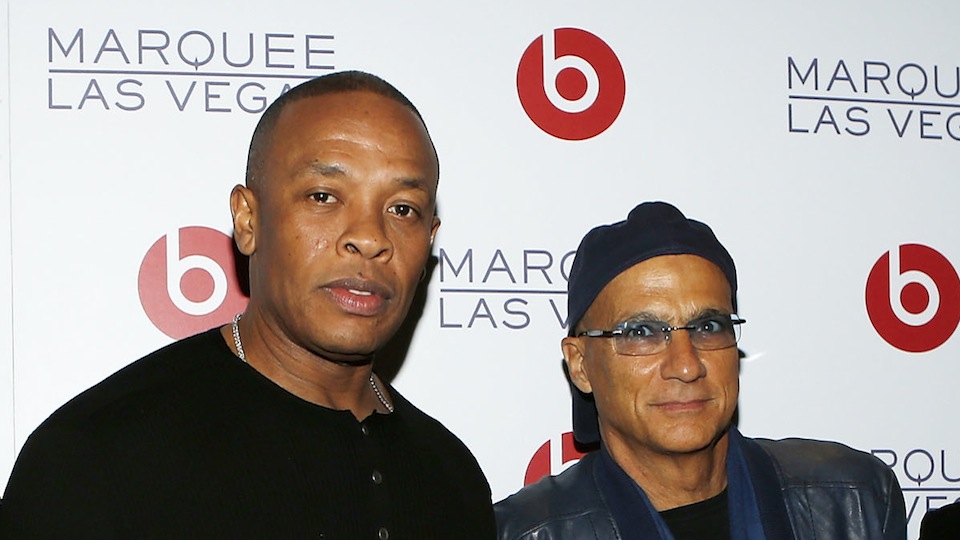
The Lees: Noel (left) and son Kevin (right) at the MTV EMA 2012 Awards.
Noel began prototyping headphones and dispatched his son to LA to book partnerships for a proprietary high-definition audio format. The audio format never saw the light of day, but the meetings were worth the ticket. “You gotta go get Usher, Mary J. Blige, U2,” Young Lee was instructed. And from there, as he tells it, fate took over: “Sometimes things just happen a certain way… the value of serendipity,” Kevin says through a halcyon smile. If he hadn’t been sent to tempt artists with a vaporware surround-sound music format, “[he] would have never met Jimmy Iovine from Interscope.” And it was this encounter that spawned the best bad idea in gadget history. Beats began.
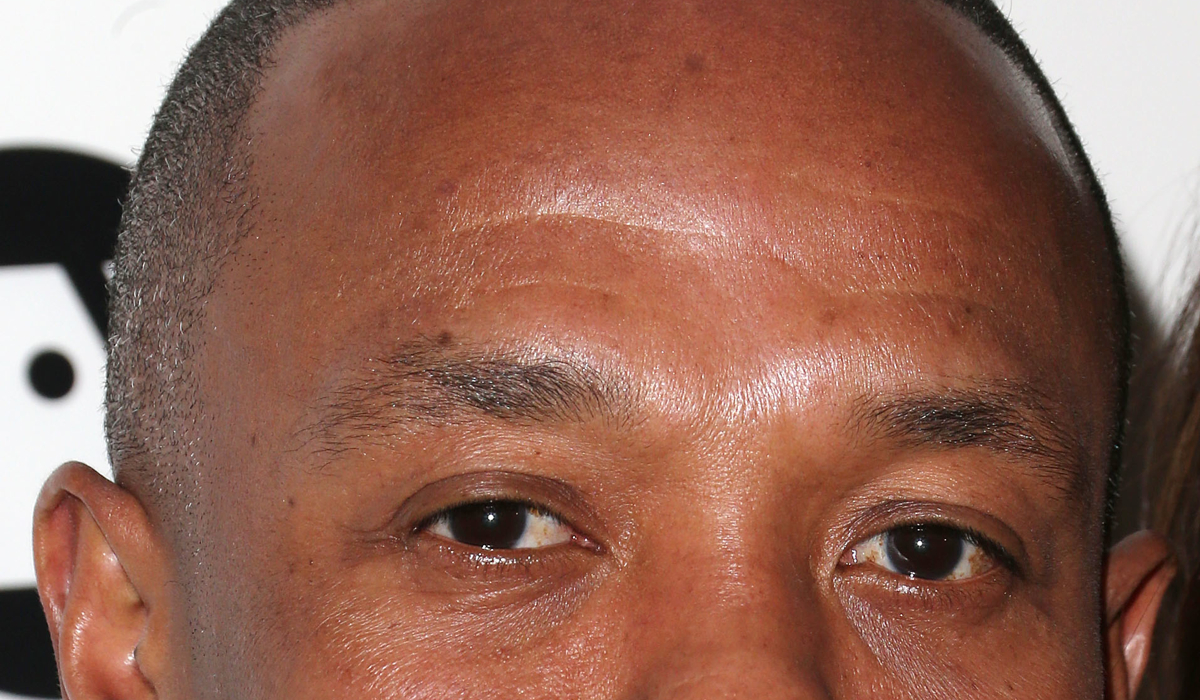
The Industry: Dr Dre (left) and Interscope Chairman Jimmy Iovine (right).
Jimmy Iovine is a mogul par excellence; a man who helped mastermind the works of Bruce Springsteen and 50 Cent alike, co-produced 8 Mile, and today sits as the Chairman of Interscope Records. Dr. Dre is Dr. Dre. When hawking Beats at press events, the two work as a pair: Iovine, fast-talking and dagger-sharp, spouts the same corny origin story every time. Interscope wanted Dre to endorse sneakers. Dre replied: “F**k sneakers, let’s make speakers.” The almost-certainly-apocryphal moment works partly because it’s cute and mostly because it rhymes. From there, they’ll have you believe, Beats was born.
But the Lees say this is only half true. After Kevin’s quest for surround sound partners, Iovine and Dre approached Monster with a dazzling offer: Let’s build electronics. “They came up and loved all the technology my dad did around sound,” Kevin recalls. Noel says he and Jimmy clicked immediately: “You know how music is supposed to sound, I know how music is supposed to sound, and the rest of the world is pretty screwed up.”
It was a “love fest” from the start, says Kevin. What followed was an “education in sound”, with a didactic Monster demoing the company’s sound tech to impress upon Iovine and Dre, its ability to reproduce skull-bludgeoning bass, including an in-ear prototype. And the Interscope pair needed the education, says the elder Lee:
Dre and Jimmy needed to understand why it wasn’t a speaker world anymore. They had no idea why people wouldn’t want to buy speakers. [They’ve] got big speakers, and always had them in the studio. Why substitute headphones for speakers?
Monster took the rap duo’s vague audio aspirations and pointed them in one very lucrative direction: high-end headphones. Bose was something your dad bought. Everything else was either crap or too obscure and complex for consumers to pick out. “Let’s build headphones together,” Noel decreed.
Love fest or not, this was never going to be a Steve and Woz moment of geek kinship. This was business from the start — and while Noel knows it now (Jimmy wanted to “own both ends,” he says), Monster didn’t show much acumen when it mattered. Monster wanted to jumpstart its headphone business. Badly.
In the turmoil of the mid-2000s, Dre and Jimmy needed to find something other than records to monetise. Badly. But the money arrangement was destined to be dominated by Iovine, a man who had gone head to head with Steve Jobs, and ran a music empire — not some small deluxe cable firm.
The Monsters knew that if they could harness Dre’s “entertainment and sports” contacts they could launch their company into the mainstream. They were right, but they were also woefully underprepared for the path to success; in the process, they blew almost every business decision possible.
When Kevin Lee went to LA to negotiate, he had nothing but a bachelors degree and no business experience outside of working for his father. Kevin Lee flew solo against a legal, financial and corporate monolith that dwarfed him. And that was clear from the start — as soon as the two firms tried to ink a deal, they bumped up against the negotiating might of Interscope. Monster had audio engineering chops, but so did plenty of other companies.
“[Jimmy Iovine and Interscope Marketing President Steve Burman] wanted a certain set of numbers, that we, as a small wire company that had just lost $US50 million trying to make speakers, couldn’t afford,” says the younger Lee. Monster was offered a money split it couldn’t live off. The music titans were lowballing. Discussions came to a standstill. Radio silence. Iovine walked, taking Dre and the entertainment industry with him. They ended it with a call: “We hate to do this to you, but we’re going to do the deal with someone else.”
Monster was alone.
Six months pass. Steve Burman, calls. Team Dre had tried to go with SLS Audio, a better-established firm with a track record in speakers, and it hadn’t worked. Burman wondered, was Monster still interested in making headphones with a rapper? They sure were!
But a lot had happened in that half a year. The term “Beats by Dre” was already coined through the failed collaboration, and SLS had come up with a rough prototype headphone that would shape the entire lineup though the present day: giant ear cups, a thick, streamlined headband, and enough gloss for a Formula 1 car. But it was way too big, Kevin Lee says — it even looked giant on Dr Dre’s enormous frame. “Put it on your head. Look in the mirror. You don’t look good.”
Back to the kitchen. Monster went through “40 or 50 prototypes” and saddled itself with some extraordinary risk. Kevin admits his father “wasn’t as gung-ho as [he] was” about the partnership. So he went behind his back and spent millions of dollars of Monster’s money without anyone’s permission. “We announced the [CES 2008] press conference, and I had already spent a million and a half dollars on engineering and marketing before we even had a signed contract.”

Kevin was completely over his head, forging the future of his father’s company without oversight, and really, without a sturdy clue: “At the time, we didn’t really know what we were going to make, at what price points, [and] at what cost.” Kevin Lee was building an entire electronics product line in secret before he had the business partnership to actually do anything with it. He was making Beats By Dre before Dre said he was allowed. And he was panicking. “It was beyond insubordination,” says Kevin. “[I was going to] lose the trust of my father. I already had millions of dollars of inventory. He would have killed me.”
Young Lee faced financial and familial self-destruction if he couldn’t seal the deal. So he sealed whatever he could — what he says was “the most complicated contract [Interscope] had ever seen.” And he faced it by himself, with his BA, against a phalanx of corporate lawyers who wake each day to do nothing but negotiate contracts that favour interscope.
There can’t be two winners. Monster solidified an agreement that got Beats Electronics alive and shipping headphones, but not without gigantic forfeit: Jimmy and Dre’s side of Beats would retain permanent ownership of everything that Monster developed. Every headphone, every headband, every cup, every driver, every remote control — if there was a piece of metal or plastic associated with Beats By Dre, Noel and Kevin Lee surrendered it to Jimmy and Dre. Monster would also be entirely responsible for manufacturing the products — a hugely expensive corner of the deal — as well as distributing them. The heavy lifting. “I was a little intimidated by Dr. Dre,” Kevin Lee admits over a child-sized portion of chicken noodle soup. Noel sits beside him without a word.
What’d Team Dre do? Let Dre be Dre. After months of development, Kevin Lee presented Dre with the first final unit, seen here for the first time ever.
Dre put the headphones on, played In Da Club, and said “That’s the shit.” That’s all anyone needed. Beats By Dre was greenlit.
Kevin Lee wanted to line up a fleet of musicians to do promotional education — trying to de-jargonise the upward-nosed world of the audiophile and make it something mall-compatible. Think Nelly Furtado explaining the importance and dangers of distortion, Robin Thicke whispering in your ear about the value of treble. That wasn’t going to happen.
The Dr Dre task force took Monster’s audio gear and pimped it, tirelessly, as a gadget status symbol without rival. That was the plan — period. Marketing, Iovine told Kevin Lee, would take too long. Education would take too long. Instead, the strategy was to enchant the public: Beats would be “the hottest product to have, and sound will be a Trojan horse. And that’s what we did. Beats was in every single music video,” says Kevin. Iovine made sure Beats had prominent placement across Interscope’s sterling roster, infiltrating the money and product lust-addled brains of video-watching America.

It worked. Disposable income was disposed of in the hundreds upon hundreds of millions. “Kids did go into a Best Buy and bought Beats not because it sounded cool, but because it made them look cool,” admits Kevin. The Lees were putting their audiophilic necks on the line to prop up what was, essentially, a fashion company. Beats’ dominance is clear whenever you walk down the street — the Bs swarm. Jimmy and Dre took decent headphones that could swamp your ears with low-end, isolate you from street noise, and keep your skull relatively comfortable during a long walk, and made all of these qualities irrelevant under a sheen of rapper-lure.
Beats might be overblown and overpriced, but these weren’t sneakers, they were complex, miniaturized electronics. They were engineering projects that took millions of dollars, dozens of prototypes, and years of back-and-forth hassling from Iovine to Kevin Lee to finesse.
But if you ask Monster’s collaborators, they’ll play down Kevin and Noel’s roles to little more than FedEx and Foxconn — celebrated partners, but a group that was responsible for little more than building the things and getting them to your local big box. Beats Electronics denies Monster had any role whatesoever in the industrial or audio design of the headphones: “We have our own factories. We have control of everything. The sound… was always our thing — we have our own patented sound signature,” says the comapny. “It’s definitely us.”
Beats Electronics CEO Luke Wood more or less repeats the claim, though insists all parties are still friends. But the friends on the Monster side were responsible merely for “sourcing” parts and picking out “materials” under the direction of “tuning” the Beats sound.
False, says Monster, who provided us with confidential design documents that show Monster’s work on both audio engineering and industrial mockups:
Including high-profile star power deals with artists like Lady Gaga:
Monster bristles at the suggestion that Beats had everything — even anything — to do with engineering: “Absolutely not, they don’t have any engineers,” says Noel. Kevin piles on: “Beats [had] zero [engineering role]”, a reality of the deal he says is “undisputed — Monster engineered the sound in Beats by Dre headphones. They told us what they wanted and they approved it, but we made that sound possible.” That “approval” role is one that’s repeated throughout Noel and Kevin’s recounting: They brought hardware to Jimmy and Dre, there would be a back and forth, and off the headphones would go to someone’s credit card bill, carried by a gust of music video bluster and rapper aspiration. It worked so, so well.
Until it didn’t — until HTC, a ballooning Taiwanese electronics giant worth billions, took an interest in Beats. Jimmy and Dre saw an opportunity for a money explosion instead of a money torrent, with $US300 million on the table for a 51% stake. Luckily for the Interscope boys — and unluckily for anyone at Monster — that slapdash contract Kevin put together let Beats waltz right into HTC’s arms. A Beats rep says the separation allowed it to be more “nimble” and have less “reporting structure to go through,” but there was more incentive than pleasant words ditch the Lees.
Monster received some money as part of the breakup — more severance payment than cash-out — and Beats walked away with everything: all of Monster’s audio work, every single patent, the trademarked design, and more than anything else, the name. Iovine had once fought Monster to scrub its name off the very packaging of the headphones it’d designed — he wanted ‘Beats By Dre’ on the box and nothing else. No Monster logo. No mention of Monster whatsoever. With the HTC deal, Monster was out for good in every possible way, unable to use the technology it created to compete against the leviathan it’d helped birth. The same year Beats Electronics dropped Monster, the company put up $US519 million in sales (versus $US298 the year before), capturing a commanding 64 per cent of the “premium” headphone market ($US100 and higher). That’s beyond a fad — that’s a conquest.
It’s hard to decide where Jimmy Iovine being a shark begins and the Lee boys hamstringing themselves ends. It’s also hard to muster the slightest decible of sympathy when everyone concerned made a lot of money and continues to be rich. There’s no reason to believe Beats Electronics will switch its formula or shift its branding in the slightest, short of some kind of heinous scandal involving Dr Dre. There’s even less reason — as much as they deny it — that Kevin and Noel Lee will try anything less than clawing back at what they once had. They swear they enjoyed their years on the Beats gravy train, but aren’t after another household name cash-in or conspicuous fad gadget.
Yesterday, Monster announced that it is partnering with rapper, mega-producer, and all-around celebrity Swizz Beatz. The company’s new flagship line of headphones are called the “Diamond Tears”, plated in mirrored, gem-faceted plastic with a plump fake jewel stuck on each side.
